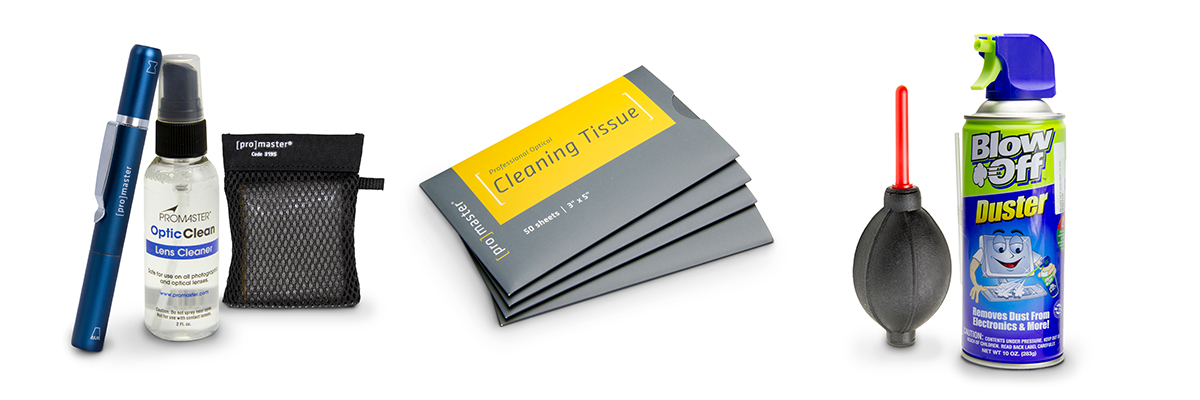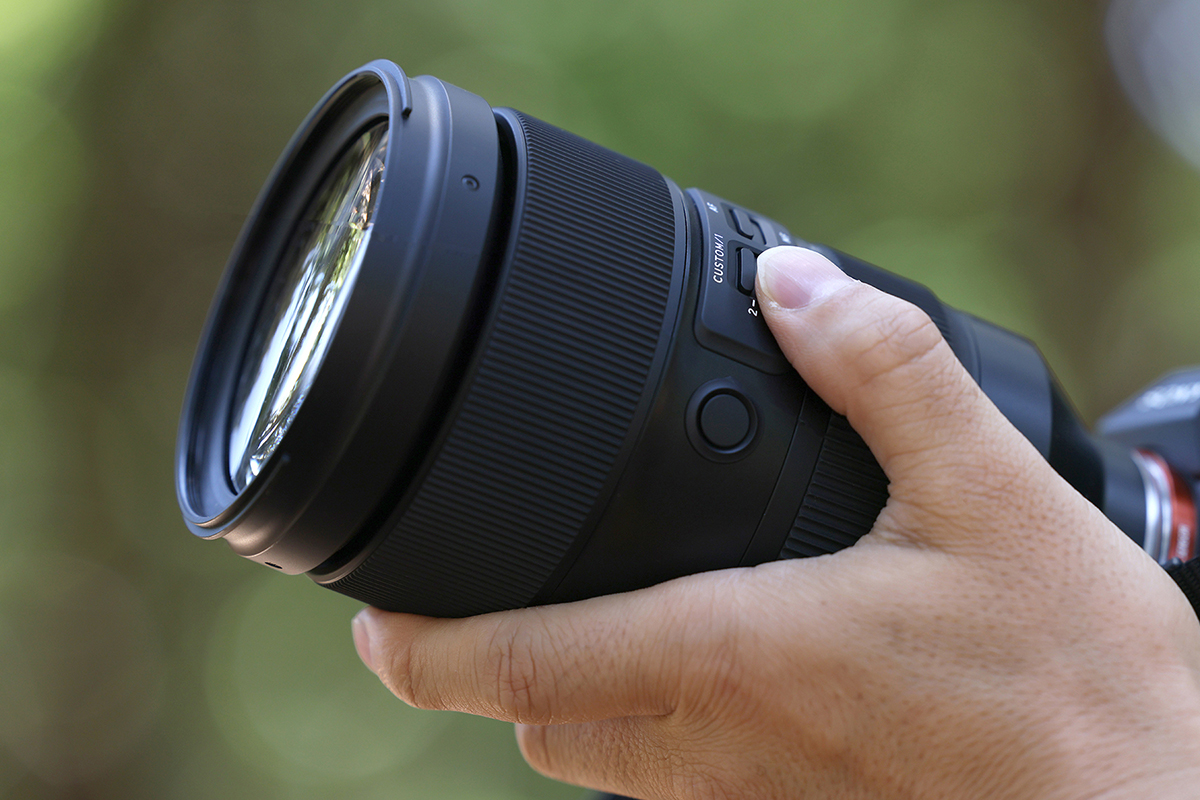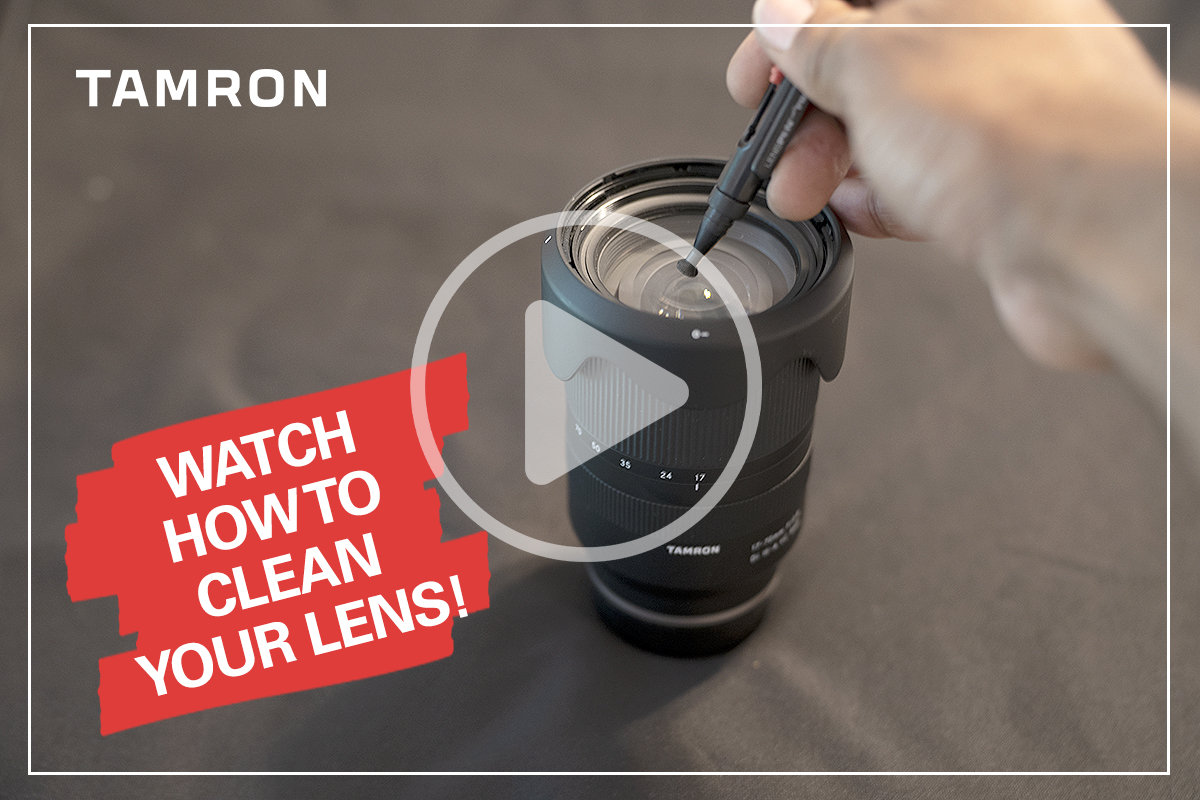Keeping your camera lens clean is essential for capturing sharp, clear images. Dust, smudges, and fingerprints can affect your image quality. Frequent camera lens cleaning is essential to uphold the superior performance of your lens. This tutorial will explain how to clean a camera lens, like one of our Tamron Sony lenses, to ensure it stays in top condition.

Gather the Tools Needed to Clean Your Lens
To clean your camera lens properly, ensure you have the right tools and lens cleaners. This will help prevent scratching the front lens element and filter. Clean your lens before heading out to shoot, and always have your lens cleaning kit handy when you are out in the field.
- Lens cleaning solution: Use camera lens cleaners specially formulated for camera lenses. If you do not have a lens cleaning fluid, you may use Windex but do not spray directly on the elements. Avoid using other household cleaners, as they may contain chemicals that can damage the lens coatings.
- Lens tissue and chopstick: To clean your lenses, wrap a lens wipe or tissue, such as Kimwipes, around a chopstick to remove dirt, dust, and smudges.
- Lens cleaning cloth: Use a lint free lens cleaning cloth or optical cleaning tissues made for cleaning a camera lens. Avoid using bathroom tissues, paper towels, or rough fabrics or you may run the risk of scratching the camera lens or lens filter.
- Lens blower: A lens blower or air blower can help remove dust particles without touching the lens surface.
- Lens brush: You can utilize a lens brush with soft bristles to delicately remove persistent particles without causing any scratches on the lens.
- Lens cleaning pen: A lens cleaning pen like the Promaster Multifunction Optic Cleaning Pen, has a brush on one end and a cleaning tip on the other. This can be useful to help with a more effective and thorough cleaning.

How to Clean Your Lens: Step-by-Step
- Power off the Camera and Remove the Lens.
Turn off your camera before cleaning to avoid accidental damage. Detach the lens from the camera body for better access. - Use a Lens Blower.
Hold a blower a few inches from the lens and gently squeeze to remove loose dust. Avoid compressed air, which can push dust into the lens or add moisture. - Brush Away Particles.
Use a soft-bristled lens brush to remove any remaining particles. Be gentle to avoid scratching the lens surface. - Apply Lens Cleaning Solution.
Lightly dampen a lens wipe or cloth with lens cleaning solution. Never apply fluid directly to the lens, as it may seep into the lens barrel. - Chopstick Method.
Fold a lens wipe into a long rectangle, then fold one corner down to create a flap. Insert the chopstick under the flap and wrap it tightly to form a padded cleaning tip. Watch the video below. - Lens Surface Cleaning.
Gently clean the lens in a circular motion, starting from the center and moving outward. Use light pressure and avoid scrubbing. - Use a Lens Cleaning Pen.
Brush away fine particles with the brush end. Then, use the cleaning tip to polish the lens. Follow the pen’s instructions for best results. - Inspect for Streaks or Smudges.
Check the lens under light. If needed, repeat the process with a fresh part of the cloth or a new wipe.
Additional Tips for Lens Maintenance
- Avoid Touching the Lens: Whenever possible, avoid touching the lens with your fingers as oils from your skin can transfer onto the lens surface.
- Use Lens Caps: Always use lens caps when your camera is not in use to protect the lens from dust, moisture, and scratches.
- Clean Regularly: Make lens cleaning a regular part of your camera maintenance routine, especially if you frequently shoot in dusty or humid environments. You can reduce the amount of camera lens dust that gets into your lens body by cleaning it properly. Dust on the inside of the lens is normal and won’t affect the image unless the dust is extreme.
- Store Your Lens in Dry Conditions: Storing your lens in a dry condition when not in use is essential and is a simple step to keep your lens in good working order. Purchase silica gel packets and place them in your camera bag when storing your gear.
- Professional Cleaning: If you’re uncomfortable cleaning the camera lens yourself or if you notice significant dirt or damage, consider a more extensive cleaning. For Tamron lenses, contact Tamron Customer Service for a clean and check.
Final Thoughts on How to Clean a Lens and Why It Is So Important
Clean camera lenses are crucial to good imaging. Regular maintenance and proper cleaning techniques are key to preserving the longevity and performance of your lens. To keep your camera lens clean and in good condition, always have a lens cleaning kit available. Follow these steps and tips to ensure high-quality images every time you take a photo.

Learn more about Tamron lenses at an authorized Tamron dealer near you or shop directly at the official TAMRON Store.

